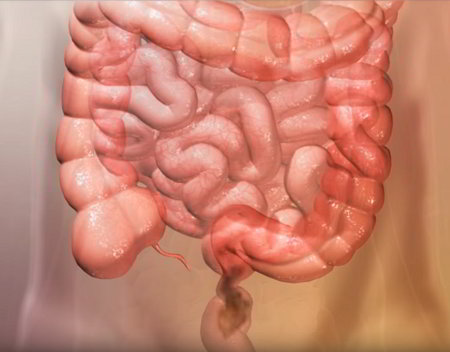Rapid Intestinal Transit: Overview
Alternative names: Bowel transit time, Small bowel transit time, Colonic transit time, Gastrointestinal motility
Intestinal transit time refers to how long it takes for food to move from the stomach to the anus after it has been broken down in the stomach. Rapid Intestinal Transit results in inadequate nutrient absorption.
- see your health summarized and in detail
- identify any nutritional deficiencies
- have a doctor review your case (optional)
The time taken for food to pass through the gastrointestinal tract depends on various factors. It normally takes around 2½ to 3 hours for 50% of stomach contents to empty into the intestines, and 4 to 5 hours for the stomach to empty completely. A 50% emptying of the small intestine then takes another 2½ to 3 hours, and the final stage – transit through the colon – normally takes 16-40 hours. High-fiber diets generally result in lower transit times.
Causes and Development

Aside from those mentioned below, there are many other things that decrease the amount of time that stool stays in the intestines, including:
- surgical bypass of part of the intestine
- prostaglandins
- serotonin
- acidic foods
- stress and anxiety are also common causes
- Zollinger-Ellison syndrome (over-production of acid due to a tumor).
Signs and Symptoms
There is no "normal" color of stool because it varies from person to person and depends on what was consumed and the digestive process. As food moves through the digestive tract, it usually turns from green to yellow-orange to brown. Bile and bacteria are what gives stool its final brown color.
Rapid intestinal transit is often suspected when stool color is greenish, meaning that the final stages of digestion have not had time to take place.
On This Page
Rapid Stool Passage:Signs, symptoms & indicators of Rapid Intestinal Transit:
Symptoms - Bowel Movements
 Green stool color
Green stool color
A green or greenish stool is usually due to rapid transit of food through the intestines. Bile is green and gradually changes to brown through the digestive process, which takes time. If the food is moving too fast, there is not enough time for this chemical change to take place.
 Recent onset/chronic diarrhea or diarrhea for 1-3 months
Recent onset/chronic diarrhea or diarrhea for 1-3 months
Rapid passage (or transit) of stool is one of the most common causes of diarrhea. Stool that leaves the large intestine too quickly is watery: there is not enough time for fluid and nutrients to be absorbed from the contents of the gastrointestinal tract.
Risk factors for Rapid Intestinal Transit:
Glandular
Medical Procedures
 Having had a small bowel resection
Having had a small bowel resection
If food passes through the intestine too rapidly (for example due to reduced length), there is not enough time for proper digestion and absorption to be completed.
Mental
Supplements, Medications, Drugs
 Magnesium-based antacid use
Magnesium-based antacid use
Antacids containing magnesium can reduce the time that food stays in the intestines.
Symptoms - Food - Beverages
Click to see sample report
Your body is a highly complex, interconnected system. Instead of guessing at what might be wrong, let us help you discover what is really going on inside your body based on the many clues it is giving.
Our multiple symptom checker provides in-depth health analysis by The Analyst™ with full explanations, recommendations and (optionally) doctors available for case review and answering your specific questions.
KEY








